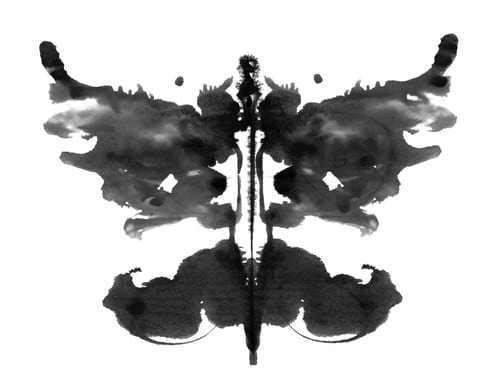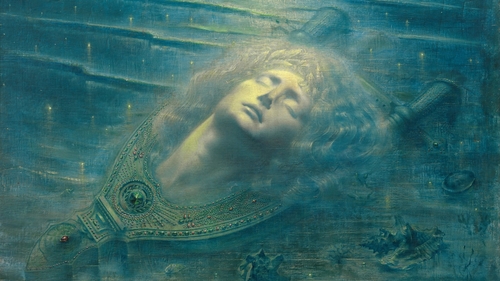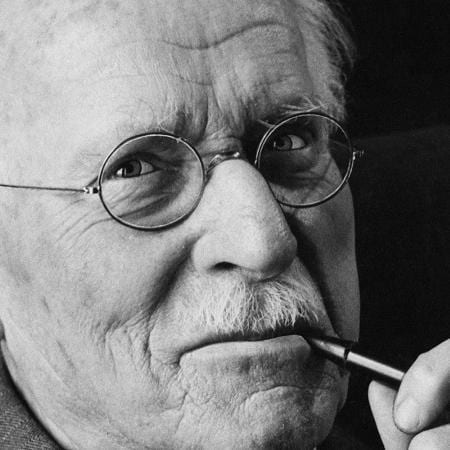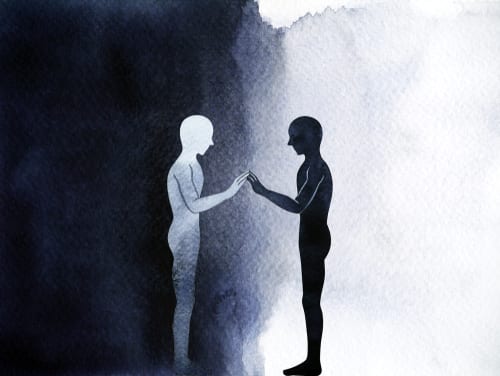 Someone once asked the question, “Does transference always occur between a client and a therapist? If both hold the adult ego state, does that eliminate transference?” The qualifying statement in this question – if both hold the adult ego state – assumes that transference psychology is only about an infantile, parental attachment to the therapist, but that is not so.
Someone once asked the question, “Does transference always occur between a client and a therapist? If both hold the adult ego state, does that eliminate transference?” The qualifying statement in this question – if both hold the adult ego state – assumes that transference psychology is only about an infantile, parental attachment to the therapist, but that is not so.
Also, this idea that an “adult ego state” exists as a finality is a fallacy. All of us have our infantile moments and states of mind, but we do not always recognize those states as such. Typically, infantile states manifest as resistance to life and its myriad obstacles to the path.
So many definitions of transference say that transference is about people “redirecting” their emotions or feelings about their parents or the past into the present. Do a search online, and that’s basically all you get. That is a somewhat simplistic approach to the transference and it does not even touch the surface of what transference psychology is in Jung’s work. Transference psychology in Jungian Analysis goes far beyond infantile parental attachments or redirecting your emotions.
In Carl Jung’s Analytical Psychology, the definition of transference is the unconscious projection of one’s subjective contents onto someone or something else.
The goal of resolving the transference is to take those subjective contents back into yourself, not to resolve and dissolve it through analysis.
Psychologically speaking, transference means that we see something in others which we cannot see or recognize in ourselves. In Jungian Analysis, transference psychology can be an essential aspect of the healing process because once it is resolved, it is an opportunity for self-realization, not only in the client, but also for the therapist (counter-transference). Again, the latter is unique to Jung’s view of transference. Many therapists actually believe they are above being transformed in their work with clients; they buy into a parental/authoritarian projection.
Now when I say self-realization, I mean it in reference to Jung’s individuation process. Individuation isn’t just Jung’s word for self-development, which is basically a reference to the development of your ego. Individuation is the process by which we integrate the unconscious aspects of our personality, whether we are talking about complexes, shadow elements, or the anima and animus. In the individuation process, the aim is wholeness and not personal development, and that process is not always pleasant.
Table of Contents - Jump To Section
Transference and Projection
 Transference is related to the psychological phenomenon of projection. When we unconsciously project our subjective condition into a person, say for example, a particular shadow character trait, then we think that we see that character trait objectively in that person.
Transference is related to the psychological phenomenon of projection. When we unconsciously project our subjective condition into a person, say for example, a particular shadow character trait, then we think that we see that character trait objectively in that person.
Let me be clearer here: we do not actually project anything, the unconscious projects itself. It’s probably better said that we are a victims of unconscious projections. We don’t recognize that projected trait subjectively as a part of our own personality and that lack of recognition causes us to act it out.
Look at this Rorschach image to the left. What you think you see is a projection of your own unconscious contents. So, if you see devils, then we’d have to look at how those devils play out in your personality. No moralistic judgment about your devils, just discernment and understanding.
Maybe your devils haunt you in the night, making you feel worthless. Or maybe your devils act out whenever you feel jealousy towards someone. In some way, shape, or form, whatever you see in this image is an unconscious part of yourself, which is projected into the image.
Now imagine how you might do that when you consider another person. It is amazing what people will say about others without realizing they are actually speaking about themselves.
Projected unconscious contents can be either good or bad, light or dark, or any other opposing dyad.
I also talk about this phenomenon in the post on the Shadow.
In reality, sometimes that projected trait of ours may also belong to that person – that’s what Jung called a hook. But other times, maybe that person is nothing like who or what you think you see. Often what we think or how we feel about others is actually an illusion of sorts, as we can see in the example below of a woman’s projected artistic ability.
Transference is a naturally occurring phenomenon in human relationships. It is an unconscious psychological dynamic and anyone can get one. We see it often in our love relationships, especially where there is a strong fascination or attachment. In fact, transference is one of the main problems in disappointing love affairs and the reason people can easily transfer their affections to another person.
When a love object can no longer hold your projection, it falls away and you are left with him or her exactly as he or she is. Your projection then needs a new vessel.
Transference Psychology and Projections
The psychological process of transference is a specific form of the more general process of projection. It is important to bring these two concepts together and to realize that transference is a special case of projection—at least that is how I understand it. Of course, everybody is free to use the term in his own way.
C.G. Jung, The Tavistock Lectures, V
By special form of projection, Jung means in a therapeutic setting, an analyst accepts the projection, i.e., the transfer of the client’s subjective contents, and holds them until the client can resolve those contents as an aspect of herself.
Other Forms of Projection in Transference Psychology
Transference is a phenomenon that can take place quite apart from any treatment, and is moreover a very frequent natural occurrence. Indeed, in any human relationship that is at all intimate, certain transference phenomena will almost always operate as helpful or disturbing factors.Carl JungWe can also project our unconscious subjective condition into a favorite thing. For example, take a man who is a one-sided thinking type, with little access to his feelings.
Now think about some of those same men and their attitude towards their cars or their Alma Mater (Latin for nourishing or generous mother). Cars, boats, and schools are often associated with the feminine, which is archetypally associated (not to be confused with social stereotyping) with feeling and relatedness.
 In men like that, their whole feeling function, which in Jungian analysis governs the way they relate to others, is transferred into these objects and thus, it is often missing from their relationships with people. For example, I know men who take better care of their computers than they do their personal relationships. They know the inner workings of their computers and software, but don’t even know how their wives take their coffee after twenty years of being together.
In men like that, their whole feeling function, which in Jungian analysis governs the way they relate to others, is transferred into these objects and thus, it is often missing from their relationships with people. For example, I know men who take better care of their computers than they do their personal relationships. They know the inner workings of their computers and software, but don’t even know how their wives take their coffee after twenty years of being together.
Another example I’ve seen is in people who have a transference of their feeling function into an animal companion. So, maybe they can’t relate to people very well, but they can relate to animals. This is actually something to work with because in essence the animal can serve as a bridge to an eventual connection with a human being.
I’ve worked with a man who developed his entire feeling function through his relationship with his dog. That new feeling function eventually changed his relationships to everyone around him, without him ever making a conscious effort at it. It was amazing to witness because it just happened naturally.
Transference Psychology and More Thoughts from Jung
 In his Visions Seminars, Jung gives an example of a vision from one of his analysands, where projections took several forms.
In his Visions Seminars, Jung gives an example of a vision from one of his analysands, where projections took several forms.
A man of crystal was created from the formless mass. [The earth goddess] breathed life into him and he became flesh and blood. The goddess disappeared and the man [and I] ascended from the pit into the light of day.
Jung elaborates this transference psychology, saying (italics mine):
When the idea of the crystal becomes formed in the unconscious it is projected. Then people suspect somebody of possessing that particular treasure which is really in themselves … she is that crystal herself, but she is not conscious of it. Therefore she sees the crystal projected onto a man.
This example shows two of the ways in which parts of ourselves transfer into something other than ourselves. You see this crystal formation is the first step in the woman realizing an unknown value (symbolized by the crystal) in herself. In this case we see a transference into both the crystal and the male figure in the vision. When we put the two images together, we can see that the unknown value is somehow related to her animus.
The same thing happens when we dream of someone. Most often what we see as belonging to these dream figures is something of ourselves which we don’t yet recognize.
Transference Psychology: Projecting Your Gold
 I told a story on my dream site about a client who had studied Jung and comparative mythology and then became fascinated by the symbolism in art and alchemy. Some years later, she came across the work of a fine artist who lived in her community.
I told a story on my dream site about a client who had studied Jung and comparative mythology and then became fascinated by the symbolism in art and alchemy. Some years later, she came across the work of a fine artist who lived in her community.
The woman had noticed all kinds of alchemical symbolism in his art and began to fantasize about the wonderful conversations they might have should they ever meet. Naturally, she assumed that he intended this imagery in his art.
When she finally met him one night, she realized that he had no idea about the archetypal meaning of his art. He was intrigued, but the conversation was nothing like she had imagined it would be. In fact, he fell flat of all expectations, turning out to be somewhat of a bore.
Needless to say, she was disappointed, but for me, I could see an emerging opportunity for her to realize something about herself.
Shortly after the encounter, my client had the following dream about Henry, her artist friend:
Dream
Henry left a suicide note for me. He was going to commit suicide by walking into the Pacific Ocean. The note said, “you know girl, I never knew that much anyway; it was always you.” I ran to the beach, thinking I could save him. Instead, he turns to me and waves goodbye. He said, “time for me to go now,” as he walked into the water and disappeared.
 Now this was the opportunity I needed to share with my client the meaning of her fascination with Henry. It was she who was the artist with the knowledge of alchemy and symbolism. She had projected that quality in herself onto this artist, whom she really did not know at all – making him a perfect vessel for projection.
Now this was the opportunity I needed to share with my client the meaning of her fascination with Henry. It was she who was the artist with the knowledge of alchemy and symbolism. She had projected that quality in herself onto this artist, whom she really did not know at all – making him a perfect vessel for projection.
So, if you notice that you have some kind of uncanny attraction to someone, especially one that evokes the kind of fantasies she was having, pay attention to that!
Withdrawing our projections
Whenever unconscious aspects of ourselves are projected then we do not see ourselves for who or what we really are: good or bad. In the above dream, the artist dies. This only means that the projection is dying. Psyche tells her that it is time for her to realize and integrate something about herself.
Now this struck home for that woman. Soon she began to paint her moods and even discovered that she had some skill in it. But through painting, what she realized was not that she was a painter, but that she was a writer. She recalled a time when she wrote daily and how much that it meant to her. Writing was the medium through which she could bring her artistic self to life.
More than anything though, it opened her eyes to something about herself that she had not previously realized. Until then, she felt like she was not artistic or talented in any way whatsoever – and that caused her deep suffering. She lived in fear of never becoming anything in her life. This dream and subsequent realization was a turning point for her. Her fears about life started to vanish, one by one. She literally transformed into a completely different person and started her life artistically.
Transference Psychology and Age Differences in Psychotherapy
 Sometimes, a transference between a therapist and client is impossible. An older man once shared his concern about his too-young therapist, telling me that he feels himself withdraw whenever he is around her. I told him that was a natural instinctive response to this young woman.
Sometimes, a transference between a therapist and client is impossible. An older man once shared his concern about his too-young therapist, telling me that he feels himself withdraw whenever he is around her. I told him that was a natural instinctive response to this young woman.
A therapist should have the experiential capacity to receive, relate, and understand your life experiences. When a therapist can’t do that, she is relying on theory, technique, or methods and that comes across very clearly to clients.
We instinctively know it when someone lacks the capacity to receive us. That instinctual knowing is what causes the withdrawal. In a therapeutic process, our energy should flow naturally into the therapist, thus opening a door for transference or projection. When it cannot, then it withdraws and reactivates all of our neuroses and old patterns of behavior.
That does not mean that the therapist always holds the client’s projection. Sometimes we just hold the therapeutic space. For example, it would be difficult for a man or a woman with a so-called father complex to get a father transference with me. In this case, we watch for the appearance of a Father-figure in dreams and fantasies. (I’m not saying that it can’t happen, especially if the person relates to me as an authority figure.)
When a transference does not occur between the therapist and client, then we look for the transference elsewhere. The first place I look is in the dreams and fantasies of my clients.
Mother Transference Psychology
 In other cases, age might not make a difference. For example, I work with a man who is a few years older than I am, but psychologically speaking, he’s quite young. His mother had denied him the freedoms of childhood by imposing a strict religious code on him. He wasn’t even allowed to have sweets – or even to desire them, for that matter. As an adult, he imposed that strict code on himself.
In other cases, age might not make a difference. For example, I work with a man who is a few years older than I am, but psychologically speaking, he’s quite young. His mother had denied him the freedoms of childhood by imposing a strict religious code on him. He wasn’t even allowed to have sweets – or even to desire them, for that matter. As an adult, he imposed that strict code on himself.
Early in our analysis, my client had a dream of two little boys running up to him, their faces covered in chocolate. At first, the meaning wasn’t clear. But later, we were speaking of his bitter attitude of self-deprivation. I remembered that dream of his. I wanted to point out that the sweetness of that chocolate might be necessary.
Then out of instinct, as if I were the voice of my client as a boy, I said, “Mommy, can I have a sweet?” but before I could finish the sentence, he said, and quite bitterly, “NO!!”
Both our eyes widened. “Yes, that was my mother again,” he told me. Instinctively, I said to that little boy, “of course you can have a sweet. Little boys deserve a sweet treat sometimes.” After a brief silence, I then said to him, “Let that boy have a life. Give him some treats.” He took that to heart, telling me later, “I have started treating myself more.”
In that respect, I had given him permission to live and to treat himself. I told him that he was not “a bad person,” i.e., not “a bad boy.” That he finally allowed himself to do what his mother had never allowed him to do, could say that at some level, there was a parental transference to me. In a sense, I had the somewhat parental authority to grant him permission to “be free.” Now, as he begins to treat himself more, that power is transferred from me into himself.
Transference Psychology in Dreams
 Sometimes it is the case that a transference does not happen between a client the therapist, but that’s okay. We can look for where the energy is, for example by watching for it in dreams.
Sometimes it is the case that a transference does not happen between a client the therapist, but that’s okay. We can look for where the energy is, for example by watching for it in dreams.
In his books Psychology and Alchemy and Dream Symbols of the Individuation Process, Jung gives a dream example of the transference of a man’s libido (as in life force, not sexual energy) from the mother complex to the anima, a particular transference which can evoke profound changes in the psyche of a man, and thus, can transform his overall personality.
Here’s the setup: the man (who we know now was Wolfgang Pauli) was a stubborn thinking type, and perhaps because of that, also very successful in his chosen field. Pauli was also caught up in a mother complex, something we can see from his dreams (see the above books for reference material). A thinking type man who is entangled in a mother complex often has issues in the feeling realm, which also means that he has trouble with authentic relatedness.
His feeling is in the mother archetype – projected into that archetype, meaning that he has no real access to his own feelings. He sees the world through the patterning of an archetype.
The Water of Life
Jung referred to feelings as the “water of life,” meaning that ineffable stuff which interpenetrates and flows between us. It is that particular lifeforce which makes us human beings. Jung says,
As long as the water of life, the essence of existence, is in the mother, the man is in a more or less unconscious condition. That means he doesn’t know he is related to the world. Instead, He finds himself contained in the world passively; he is as if suspended in the mother’s womb, contained in the water, the amniotic fluid. (C.G. Jung, Dream Symbols of the Individuation Process: Notes of C. G. Jung’s Seminars on Wolfgang Pauli’s Dreams, pp. 123-4.)
DREAM from the patient mentioned in the book:
The dreamer’s mother is pouring water from one basin [water pitcher] into another. (The dreamer only later remembered … that this basin belonged to his sister.) This action is performed with great solemnity: it is of the highest significance for the outside world. Then the dreamer is rejected by his father.
Psychology and Alchemy, par 91
In other words, the source of life-giving water, whatever that is, is no more in the mother basin (the archetype of the mother) but in the sister basin (the anima). The source of secret life does not well up any more in the mother, and whatever she means for this man, but is now in the sister. This refers to an important change in the anima image of the man.
… The pouring of water into the basin of the sister is entirely symbolical. The symbol refers not really to sister, but woman.
Dream Symbols of the Individuation Process, page 122
Flowing water symbolizes flowing psychic energy. In this case, the man had been trapped in a mother complex. In the dream, we can see that the energy which was once held up in the mother symbolically moves out of her and into the sister. We see the shift from a parental complex into a less authoritative figure, his sister, someone to whom he was better related. It is the first step in this man becoming more related to the world around him.
To repeat something important: whenever we talk about transference psychology, we are mostly talking about unconscious dynamics. Even when you know that you have transference, until you recognize your missing value, you won’t resolve it. We can recognize transference psychology by stubborn resistances to letting go, something we see in the case example below.
An Example of Transference Psychology and Its Resolution from Carl Jung
 So the next question is: What do we do when we uncover this transference?
So the next question is: What do we do when we uncover this transference?
Too many people over simplify transference psychology, as if it were something that could be resolved with reason, intelligence, or sheer will power, or if one is a therapist, then with the proper technique. It isn’t like that at all. As Jung said,
you have to make the patient realize the subjective value of the personal and impersonal contents of his transference.
C.G. Jung, Tavistock Lectures
Again, a real transference will not resolve with an intellectual understanding of it. That transference will persist – almost beyond endurance – until one realizes the aim of that transference.
The aim of a transference is that you realize something of supreme value within yourself. I say within and not in because there is a difference. By within, I mean that this value is something connected to your ego, but which exists beyond it. Let’s look at the story below …
Transference Psychology and Jung’s Case Work
 One of Jung’s classic examples of transference and its resolution was about a young woman who had a positive father transference onto Jung. I use this example because it’s so illuminating, however, keep in mind that a transference isn’t necessarily about parental attachments.
One of Jung’s classic examples of transference and its resolution was about a young woman who had a positive father transference onto Jung. I use this example because it’s so illuminating, however, keep in mind that a transference isn’t necessarily about parental attachments.
I had a case that was an intelligent young woman. She was a student of philosophy, a very good mind, where one could expect easily that she would see that I am not the parental authority. But she was utterly unable to get out of this delusion.
This woman knew that Jung was not her father, yet she could not let go of this attachment to him.
And in such a case what one always has recourse to is the dreams. It is just as if one would ask the unconscious, “Now, what do you say to such a condition?” You see, she says, through the conscious, “Of course I know you are not my father, but I just feel like that, it is like that, I depend upon you:’ And then I say, “Now let’s see what the unconscious says.”
Dreams of a Young Woman with a Transference
 In her dreams, he appeared sometimes as a father, and at other times, almost godlike. This last bit – Jung in a godlike image – is really important, something you’ll understand at the end of the somewhat longish quote, so stick with it.
In her dreams, he appeared sometimes as a father, and at other times, almost godlike. This last bit – Jung in a godlike image – is really important, something you’ll understand at the end of the somewhat longish quote, so stick with it.
Now the unconscious produced dreams in which I really assume a very curious role. You know she was a little infant, she was sitting on my knees, I held her in my arms. I was a very tender father to the little girl, you know, and more and more her dreams became emphatic in that respect. Namely, that I was sort of a giant and she was a very little frail human thing, you know, quite a little girl in the hands of an enormous being.
And the last dream of that series (I cannot tell you all the dreams) was that I was out in nature, I stood in a field of wheat, an enormous field of wheat, ripe for harvest. I was a giant, and I held her in my arms like a baby, and the wind was blowing over that field of wheat.
Now, you know when the wind is blowing over wheat it makes these waves in the wheat field, and with these waves I swayed, like that, putting her, as if it were to sleep. And she felt as being in the arms of a god, of the godhead, and I thought “Now the harvest is ripe and I must tell her.” And I told her, “You see, what you want and what you project into me, because you are not conscious of it, is you have the idea of a deity you don’t possess. Therefore you see it in me.”
That clicked!
She suddenly became aware of an entirely heathenish image that comes fresh from the archetype. She had not the idea of a Christian God, or of an Old Testament Yahweh. It was a heathenish god. you see, a god of nature, of vegetation. He was the wheat himself, he was the spirit of the wheat, the spirit of the wind, and she was in the arms of that numen.
Now that is the living experience of an archetype. Now that made a tremendous impression upon that girl, and instantly it clicked. She saw what she really was missing, that missing value that was in the form of a projection on myself and made myself indispensable to her.
And then she thought, well he is not indispensable. Because, it is as the dream says, she is in the arms of that archetypal idea.
Jung Speaking, (pp. 345–7)
C.G. Jung Speaking about Transference Psychology
The segment of the video I mention in the above section:

Transference Psychology: The Spiritual Aim of the Transference
You cannot dissolve the transference by analyzing it away, that is quite impossible. You only get over a transference if you get the projected value out of the [person and into yourself]. When you realize the treasure in yourself, you will not envy it or desire it in [another]; then you have an equal value in yourself.
C.G. Jung, Visions, Notes on a Seminar Given in 1930–1943, pg. 319
 In light of Jung’s quote above, we can say that the psychological aim of the transference is the reclamation of a lost or unrealized part of your own soul. For example, a young woman once asked me about the nature of transference to her therapist. She said that could hardly bear the separation from her in between sessions. I told her, “What you see in this woman is not who she is, but who you really are. She represents a value in yourself that you have not yet recognized. Why you miss her so much is because the psychological value she represents is missing from yourself.”
In light of Jung’s quote above, we can say that the psychological aim of the transference is the reclamation of a lost or unrealized part of your own soul. For example, a young woman once asked me about the nature of transference to her therapist. She said that could hardly bear the separation from her in between sessions. I told her, “What you see in this woman is not who she is, but who you really are. She represents a value in yourself that you have not yet recognized. Why you miss her so much is because the psychological value she represents is missing from yourself.”
In the lexicon of C.G. Jung, a psychological value is the same as an essential element of your own soul.
Projection of the god-image in Science

Psychologically speaking, we define God as that which occupies the highest value in a person’s psychic economy. It is what is most important to a person. When it is a central fact of a culture, then God is what is most important to the culture as whole. Furthermore, God does not have to be an anthropomorphic projection of a heavenly father. We can project the highest part of ourselves into ideals or ideologies, such as political parties, science, data, rational thinking, and even money.
Whatever you hold as the highest power or authority is, psychologically speaking, your god; it’s just in a de-anthropomorphized form. How many people bow to the holy gods of science or the rational mind? Well, that’s just a projection of the god-image, a religious value which should be recognized in yourself as such.
Working with the Transference Psychology in Jungian Analysis
Another common question I get is, “How long does a transference last?” The answer depends on two mutually dependent variables. First is the way your therapist understands and works with transference psychology. Second is your conscious participation in the resolution of the transference, obviously something which requires intense work on your part.
Transference Psychology: the Reductive Approach
 Many therapists understand transference psychology only at the reductive level. Typically that means therapists inform their client or patient of the historical antecedents of the transference, for example, in attachment issues stemming from emotionally unavailable parents or in infantile attachments to the parents.
Many therapists understand transference psychology only at the reductive level. Typically that means therapists inform their client or patient of the historical antecedents of the transference, for example, in attachment issues stemming from emotionally unavailable parents or in infantile attachments to the parents.
The reason I call this approach reductive is because it rarely resolves the transference in and of itself. The transference either becomes more resistant to resolution or redirects itself to someone else. If only intellectual realization of the transference were such an easy solution.
Many people recognize a mother transference for what it is: a maternal attachment, whereby the client or patient feels the therapist to be like a mother. Knowing that information, however, does nothing to alleviate the attachment because you have not yet realized the unconscious aim of your attachment.
the Constructive Approach
People have a transference to their analyst because they suppose that he or she is in possession of the treasure. It is like rubbing up against the shrine containing the bones of the Saint. They get the grace, as if he were the Savings Bank of divine treasures.
C.G. Jung, Visions Seminars p. 319
I follow C.G. Jung’s advice on understanding the transference psychology. We seek to understand the aim of the transference for the individual who has a transference, not its biographical references.
So staying with the above example of a mother transference to a therapist: What is the aim of the transference?
I’ll give you two hints at where I’m going here. First, having a mother transfer to a therapist does not mean that you want a mother. That element of the longing is the infantile aspect of this transference. You will have to sacrifice that longing if you want to move forward in your life as a whole person.
Second, that longing you have for a mother is not your own longing. It is actually the longing of your own soul, only she – the Mother – longs for you. The Mother within longs for you to realize her as an inner value. That means something realizing supraordinate within yourself that can support, contain, and nurture you throughout your life. Realization of Her releases all claims, demands, and desires for someone else to mother you.



 DREAM from the patient mentioned in the book:
DREAM from the patient mentioned in the book:
This is the best explanation of transference I’ve come across as a beginner to Jungian psychology. Thank you so much for the incredible work.
Many thanks for taking the time to comment, Terri. I am happy to hear that you resonated with the post. Bringing Jung to life is the aim…
Really a great article especially for the part on how the transference is resolved. It seems elsewhere they always forget about that, what to do with the transference or they stay at the idea of taking back the projection. Here it’s enlightening, so thank you.
I have found your website informative and interesting. There are things here that I missed when I previously looked at Jung. Thank you.
Well that is the most meaningful discussion of Transference I have come across. Thank you. It doesn’t help me with my intense feelings for my therapist, a man at least 30 years younger than me, but it does help me feel less utterly ridiculous, and more hopeful that (with his patient help) it will be resolved in a positive way.
Tosca, I am sorry to hear that it didn’t help…knowledge of the “what” gives you something to work with. Hopefully, you are working it out with your analyst.
Muito bom artigo. Parabéns pelo excelente trabalho.
Amazing! I have spent a year searching for the information contained in those last 2 paragraphs. That includes reading The Psychology of the Transference! Thank you.
Karen, thanks for commenting. Very happy to hear that it resonated and also glad to know people are still reading!